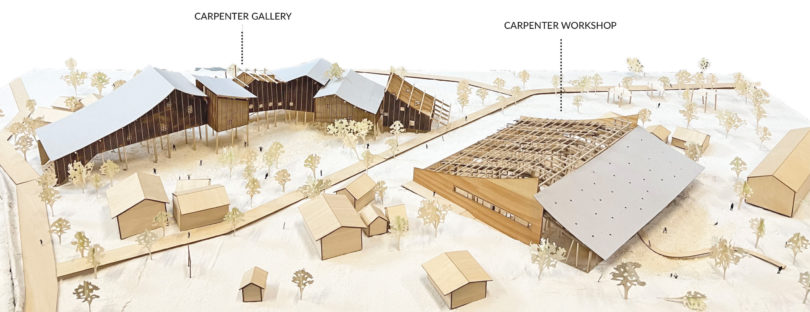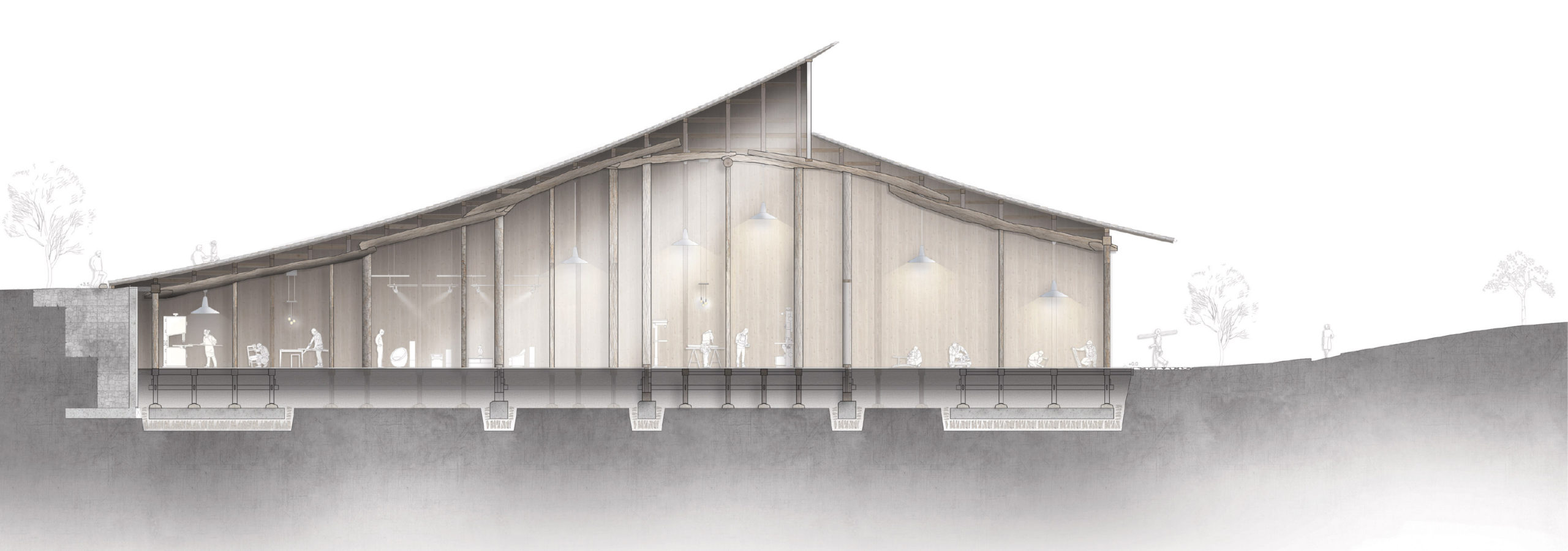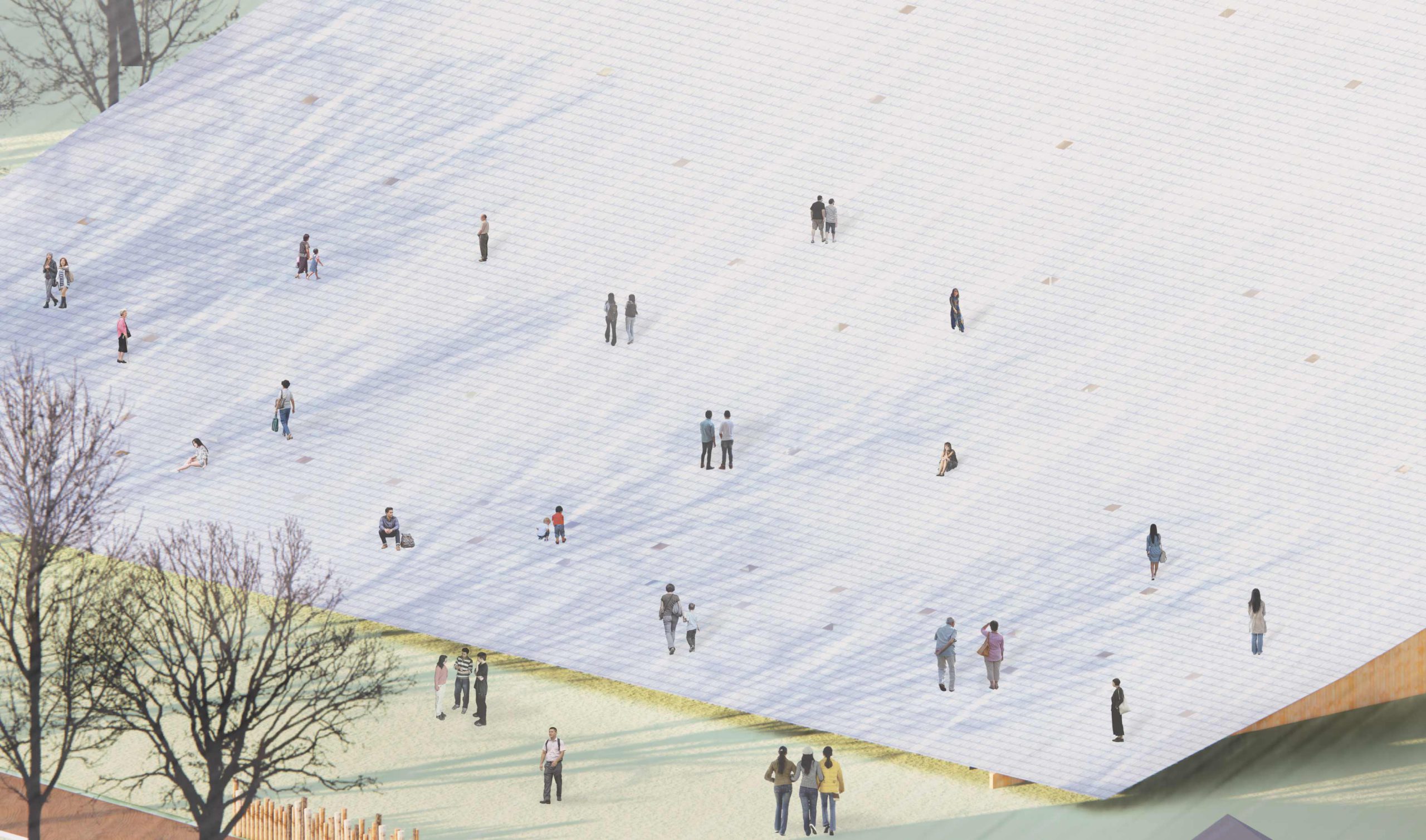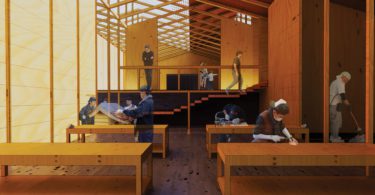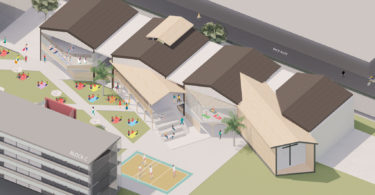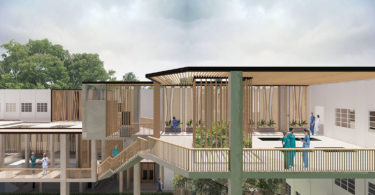The proposal seeks to introduce a dedicated hub for carpentry in the Kosho region of Honjima—in an effort to promote the historic craftsmanship that is synonymous with the island. To this end, local materials are reused to design a workshop and gallery; alongside storage space, information centre and pavilions. This instance of repurposing is reflective of the common practice of islanders in times when importing of goods may prove difficult.
REUSING MATERIALS SOURCED LOCALLY
A total of 13 units of structurally intact, abandoned dwellings from neighbouring areas are relocated to the site without being dismantled. Such a move is achieved through the adoption of the Japanese age-old method of hikiya, which in turn enables the structural materials of these buildings to be directly reused. Loose logs from damaged houses are utilised as well.
KEY BUILDINGS COMPLEMENTED BY MULTIPURPOSE AREAS
The proposed workshop is sunken 5 metres below ground while the gallery is elevated off the ground on stilts. Located across a main road from each other, the contrasting designs produce differing spatial qualities for the pair as the heart of the hub.
The workshop is a long-span structure, measuring approximately 43 metres by 46 metres, with a wooden frame. A walkable roof, fashioned out of recycled tiles, emerges at one end. Besides generating a point of interest for visitors, the roof offers a vast gathering area that the neighbourhood lacks. At opposite end is a main entrance—accessible via a footpath sloping down to the opening—completed with a semi-open, multifunctional foyer.
Meanwhile, a row of wooden houses constitutes the gallery to provide multiple platforms for the display of carpentry tools, scaled models/drawings, joinery and materials. The use of stilts adds a space underneath the gallery for flexible usage, including as a venue for weekend markets.
PROJECT DATA
Project Name
A Carpentry Learning District Design Proposal
Location
Honjima, Japan
Site Area
5,000 square metres (approximate)
Gross Floor Area
3,800 square metres (approximate)
Building Height
20 metres (approximate)
Student
Cheung Nga Kei, Cherry
School
The Chinese University of Hong Kong
Programme
Master of Architecture
Supervisors
Lily Zhang; Wataru Shinji
Images
Cheung Nga Kei, Cherry
This is an excerpt. The original article is published in
Construction+ Q4 2023 Issue: The Power of Construction Engineering.
Get the print magazine or subscribe to the digital edition to read the complete article.

 Malaysia
Malaysia Hong Kong
Hong Kong Indonesia
Indonesia Tiếng Việt
Tiếng Việt ประเทศไทย
ประเทศไทย


